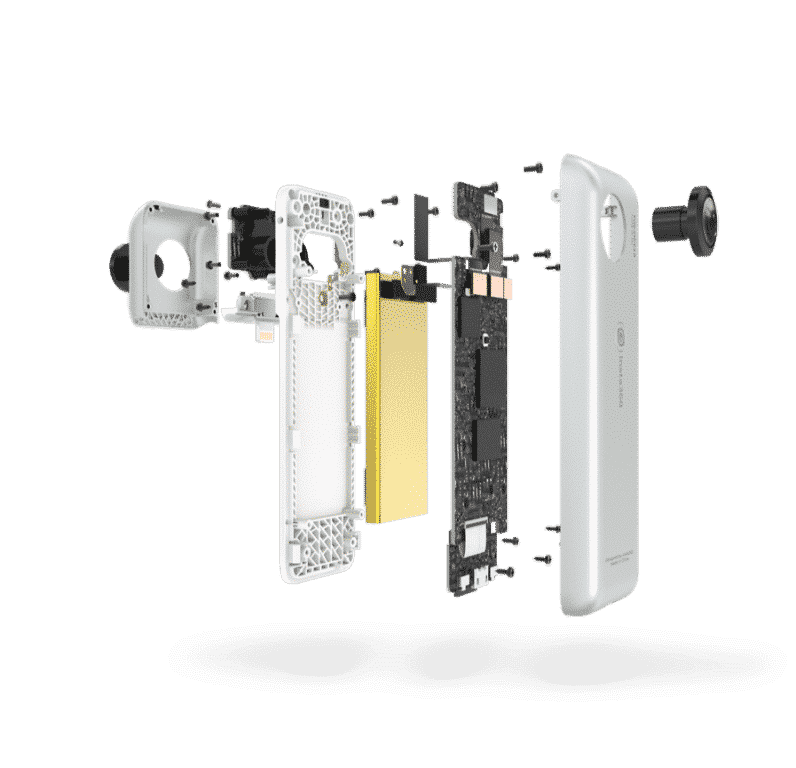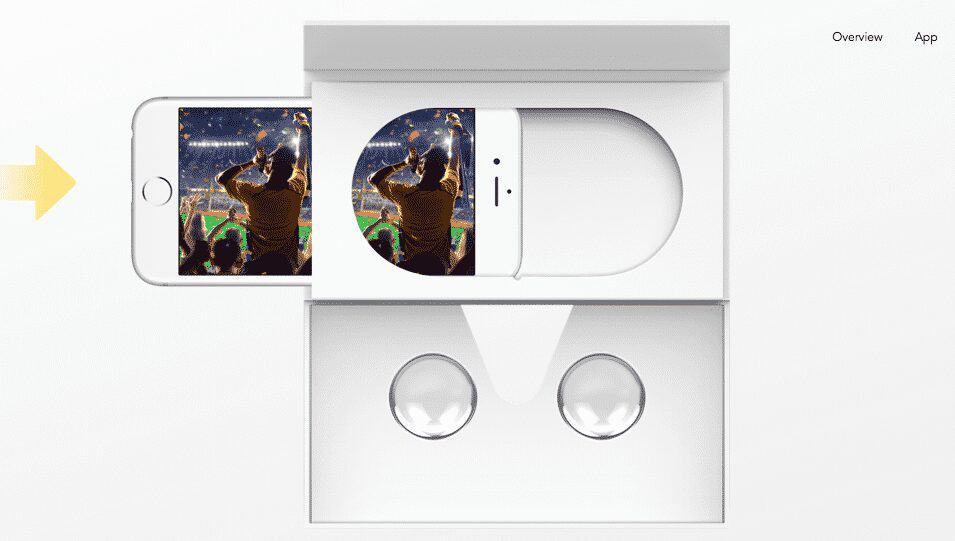Want to shoot and live-stream your world in virtual reality? Then take a look at the Insta360 Nano, a small clip-on 360 camera that lets you take virtual reality photos and videos with your iPhone. We’ve said all along that the best way getting VR content produced is through highly portable cameras for the consumer market. And while the Vuze VR Camera and the adorable little device from HumanEyes fit the bill, there’s nothing like the convenience of using your Smartphone.
We suspect that in a few years, most phones will have a VR add-on even if they’re Tango enabled. but until then, the Insta360 Nano is a nicely designed solution.
The Specs on the Insta360 Nano:
Let’s break it down:

And here’s what you get:
- Dual-lens format, shooting in 4K mode at 15fps, or 3K at 30fps
- 3040 x 1520 resolution
- Additional storage capacity through a micro SD card slot
- Built-in 800mAh battery that gives you 100 minutes between charge
- Weight 70 grams
The extra battery and SD card slot are incredibly useful features – it will help you avoid draining your battery and running out of storage. And with dual 210 fisheye lenses, it has enough overlap to resolve stretching problems (depending on how well the software functions).
It’s available at the end of July for $200 and you can preorder online now. If you’re ordering one, you probably already have a Google Card VR viewer. But as a cool packaging detail, the box the unit comes in will turn into a Cardboard viewer.

A 360 Camera with Live-stream Video
You can see the potential of the Insta360 Nano in the consumer market. We video everything these days, but the vast majority of it is still in the rectangular frame of the traditional video screen. That could change dramatically once shooting VR is as simple as an iPhone add-on. And with the Insta360 Nano you can not only share the VR videos you capture on your iPhone, but live-stream them as well. There’s nothing in the consumer market offering that at the moment.
The Insta360 Nano could make it much easier to integrate virtual reality and immersive images into the learning environment. Since the spring, we’ve got a range of VR headsets but are still woefully short on content. And it could help independent filmmakers by turning the iPhone into a pre-production tool for assessing locations and visual effects.
In short, there’s a lot to like here if it lives up to its promise. We’ll do an updated review as soon as we get our hands on the device.
Emory Craig is a writer, speaker, and consultant specializing in virtual reality (VR) and generative AI. With a rich background in art, new media, and higher education, he is a sought-after speaker at international conferences. Emory shares unique insights on innovation and collaborates with universities, nonprofits, businesses, and international organizations to develop transformative initiatives in XR, GenAI, and digital ethics. Passionate about harnessing the potential of cutting-edge technologies, he explores the ethical ramifications of blending the real with the virtual, sparking meaningful conversations about the future of human experience in an increasingly interconnected world.

